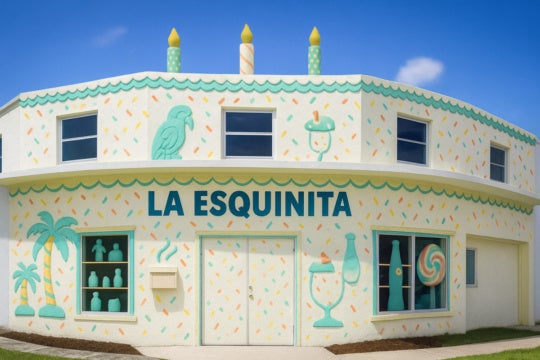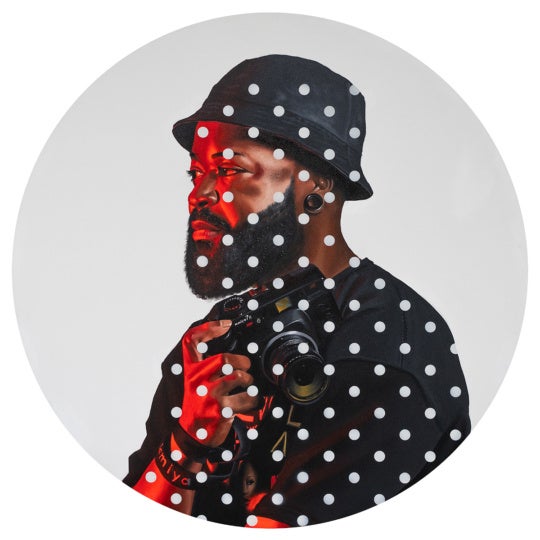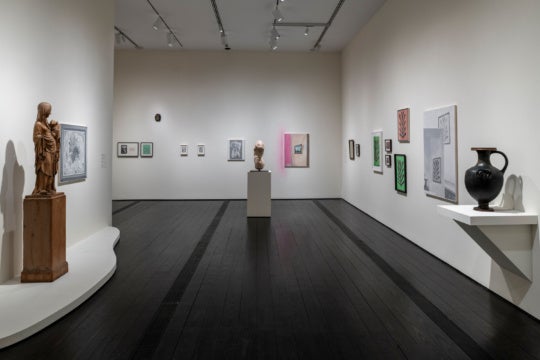
Tiger Moon, a dynamic hip-hop duo of Asian American female performance artists, consists of the illustrious Zopari Kristjanson and the perpetually chill Chanel Kim. Each is unconventional and possesses discerning personal style in her own way, and they are both well-known in the Atlanta art and music scenes.
Kim is the Gallery Manager at Get This! Gallery and can oftentimes be found inventing magical objects within the realm of her captivating Cabbagetown apartment.
Kristjanson, known to her friends as Zopi, is likewise rarely without a creative project, and the quality of her work is at no time sacrificed by her prolific nature. I’m not quite sure how she pulls it all off, but I’ve never seen a performance by her that wasn’t full of wit, innovation, and fiery vocals. Currently she is a member of the band WARSZ, along with musicians Chris Devoe and Jason Harris, whose members describe themselves as “glitter doom.” I call myself a fan of the trio and characterize their dark wave sound as a contemporary version of the band Joy Division, but with beats—plus out-of-this-world vocals and fearless attitude supplied by Kristjanson. Today I find her standing in the front yard of her home in East Atlanta with her treasure of a dog, waiting to greet me upon arrival.
Once inside, Kim explains that she is new to performance and that Kristjanson is helping her to battle any shyness; but Kim projects such an unshakable confidence that I am startled by this admission of vulnerability from her. The two haven’t known each other for very long, which I find surprising, because of the strong sense of ease and friendship that flows between them. Their lyrics, which they co-write, are stirring, clever, and enlightened. The artists employ choreographed scenes, costumes, and handmade visual materials to address powerful issues such as Asian identity and femininity. Moments when the teams’ words and motions become synchronized are unyielding; and when either of them raps individually, her phrasing acts as a form of promotion for her partner’s next rousing configuration of language. A seamless collaboration full of power and vision occurs when these artists join forces.
Their current exhibition, Me Love You Long Time, opened at Eyedrum Art & Music Gallery, located at C4’s FUSE Arts Center, on September 13, 2013 with a Tiger Moon performance. The dual exhibition also includes works by the artists Yoon Kyoung Nam and Yoonhwa Jang. Happily, Kim and Kristjanson plan to continue performing as Tiger Moon, with further eye-opening appearances to come.
Sherri Caudell: Does having your studio space in a room at Zopi’s home influence the work of Tiger Moon, as opposed to having an outside studio? Do you feel confined, or do you think it’s easier?
Zopari Kristjanson: The tiger’s den is right here! I don’t think so, I mean, it’s easier because I have a PA system here. And we can do some artwork and we can practice on the rhymes because it’s kind of a multidisciplinary show, so we have to sort of move back and forth. And, I mean, there’s plenty of space here!
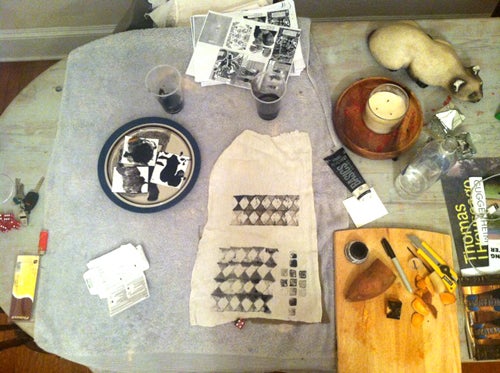
SC: Do you feel like working as a team strengthens you and allows you to bounce ideas off of one another?
ZK: Yeah, I mean the whole process has been incredibly rewarding for all of us, I think. Not only just on a personal level but finally meeting other women, like Chanel was saying, that have kind of been through the same thing and finding a way to articulate whatever that is. I think it’s different for all of us, but then we all share certain similarities in our feelings about it. Chanel has a great arts background. She has amazing taste! I think we edit each other really well. She brings a lot in terms of gallery experience, you know, writing the press release, and all that kind of stuff.
SC: What made you guys decide to collaborate?
ZK: Actually, it started with Yoon Kyoung Nam’s work. I wanted to do a show for her. Chanel and I are actually just recent buddies; we haven’t known each other for very long. I was talking to Chanel about it, and she had her friend Yoonhwa Jang [who] she said kind of had similar style. I was like, “Okay, they’re both named Yoon, we can’t just do a show based on the fact that they’re named Yoon.” I [said], “Why don’t we just kind of exploit the whole Asian thing; like, just go balls out with it, and me and you can do a performance piece that kind of goes with that?”
SC: So is Asian identity what ties everything together with the other two artists in the show?
ZK: Yeah, the other two artists being Asian, and also it [was] like, we’ll just do an Asian blowout! All four of us are Asian American. We [Tiger Moon] don’t really hang out with other Asian people a lot.
SC: Why do you think that is?
ZK: Well, we talked about it and we’ve always sort of wanted to distance ourselves from that. Or I personally have. I remember Asian girls being like, “Come hang out and go to the spa with me,” and I was kind of like, “Ehhh.” I guess I feel like when I go out with other Asian girls, I’m immediately objectified. You know? Or that’s just what’s going on in my head. I don’t want to be categorized as that.
Chanel Kim: I think it’s also all tied into the idea of the Asian image. Somebody yesterday came up to me saying “nǐ hǎo,” and it’s just purely based on how I look. Nǐ hǎo is “Hello” in Chinese. It’s just very bizarre because that’s not my identity. I’m American.
SC: Are you guys having a continuous dialog, during your process, with the other two women in the show?
CK: Yeah, we are definitely very much a part of the exhibition, and they are very much tied to the works of Tiger Moon.
SC: Is there also an element of dance involved in conjunction with Tiger Moon’s rapping?
ZK: Yes. There’s a little bit of choreography, not while we’re rapping because we got to focus on the rhymes. But, for the choreographed part, we practice in the front yard with umbrellas. So we’re doing it sort of like it was a scene from Pacific Rim. It’s kind of a take on the Asian umbrella, you know, the parasol thing. We’re using these [umbrellas] and just sort of twirling them around a little bit.
CK: The performance goes from what I think is a dark, mysterious, Asian parasol scene; that then shifts into a Shaolin sort of fighting scene.
ZK: Yeah, sort of like the sweet, but kind of seductive, Asian feminine identity mixed with the samurai.
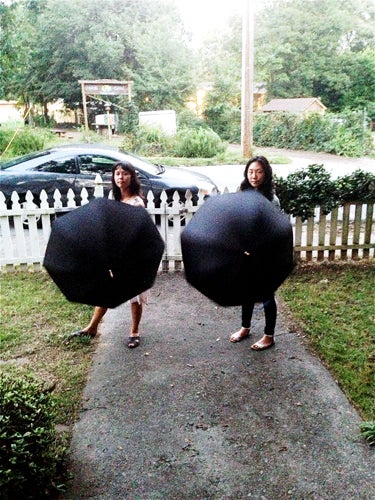
SC: Does performance feel like the most natural way to express the ideas behind Tiger Moon?
ZK: I mean, for me it’s not enough, that’s why we have scrolls and our zine to kind of back up everything. I feel like we need supplements, so that’s why we were potato printing symbols, the “hybrid-hieroglyphics” we’ve created, onto hanging scrolls and using bamboo in the installation.
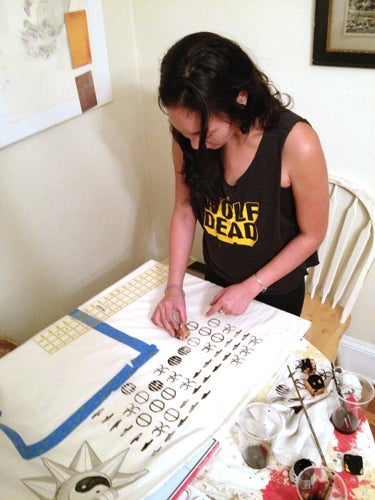
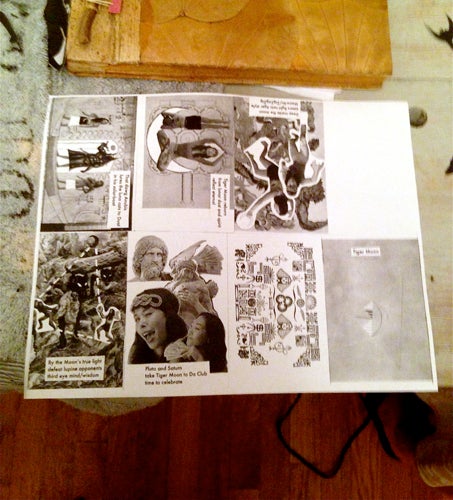
SC: How do you define the concept of the Eastern Mystique that runs throughout your work?
CK: The Eastern Mystique, from what I take it as, is there’s this mystification of the East that comes from history cycled over and over.
ZK: Well, you see it in pop culture too, it’s people’s obsession with samurai movies and Bruce Lee and also men [who] are just really into Asian women, like [in] anime. It’s like the fetishization that you see. We’re kind of responding to that, reclaiming the sexiness of it.
SC: How do you guys want to be viewed by the public? What do you want people to take away from a Tiger Moon performance?
ZK: It’s about appropriating symbols and icons from other cultures. So Tiger Moon, we take symbols from Greek culture. We’re using Greek iconography [such as] Pluto, Saturn, and Dionysus; and then also the [Greek] and Egyptian [goddess] Sophrosyne. I mean, we’re basically taking all these elements and pastiching them together to create our own mythology that is meaningful for us; and that’s our “Lunaverse.”
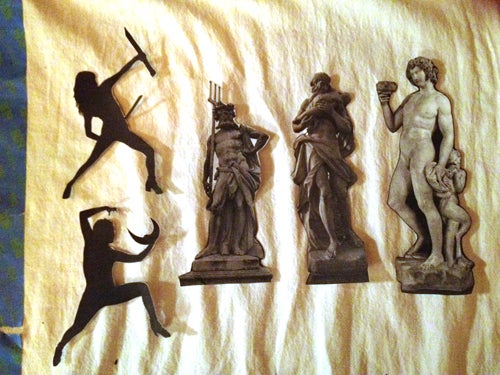
SC: Can you explain a little bit more about the Lunaverse and the Tiger Moon story?
ZK: So yeah, the Tiger Moon story, the one that we created, our lunar mythology; we’re kind of melding science fiction with all of this Egyptian and Greek stuff. So, Tiger Moon: we’re feline samurai spirits, we’ve been reborn a thousand times, we kind have come to terms with that, and our final incarnation was in 1996 on the moon. Then we move through these chambers, which are really heavily based on the concepts of the underworld in both Greek and Egyptian mythology, which often overlap. In 1996 hip-hop is at its best, and we start rapping about our journeys through the moon, all [of] these characters that we come into contact with, and our own struggles: with finding the right man, battling our vices, and sort of obtaining enlightenment.
SC: Is the Wu-Tang Clan a real inspiration for Tiger Moon or more of a comedic element?
ZK: I actually shared space with Ghostface a few months ago. Yeah, so that was kind of like a shining achievement for me! I mean, they have the whole samurai thing and sort of developed their own “almost religion.”
CK: And really getting into their whole philosophy, which is so much deeper than just hip-hop culture, you know? It’s really fascinating, actually.
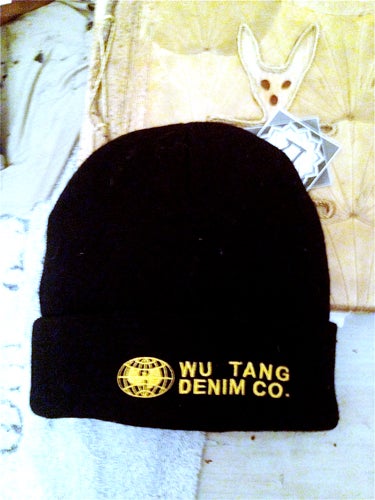
SC: I think it’s so fresh that you guys have created your own myth!
CK: I mean, it’s not completely unique. It’s grabbing from our personal histories, but also the ones that have been handed down to us.
ZK: Yeah, [ones] that resonate with us.
SC: I know you guys mentioned looking sexy. Does fashion play a role in Tiger Moon, and how?
ZK: I think we’re still balancing out that kind of sexy femininity with the tough gangster look.
CK: I think the feminine comes from us, though. It’s not from the actual materials we are wearing, but [from] our attitudes.
Artist Talk: Sunday, September 29, 3–5 PM
Closing Reception: Saturday, October 12, 8–10 PM, with Tiger Moon performance at 9 PM
Both at Eyedrum Art & Music Gallery
Disclosure: Chanel Kim is BURNAWAY‘s newly hired events editor. This interview was in progress before Kim’s hiring. In pursuit of featuring work that significantly contributes to cultural discourse, as well as our commitment to transparency, our policy is to disclose instead of exclude.
House rules for commenting:
1. Please use a full first name. We do not support hiding behind anonymity.
2. All comments on BURNAWAY are moderated. Please be patient—we’ll do our best to keep up, but sometimes it may take us a bit to get to all of them.
3. BURNAWAY reserves the right to refuse or reject comments.
4. We support critically engaged arguments (both positive and negative), but please don’t be a jerk, ok? Comments should never be personally offensive in nature.

